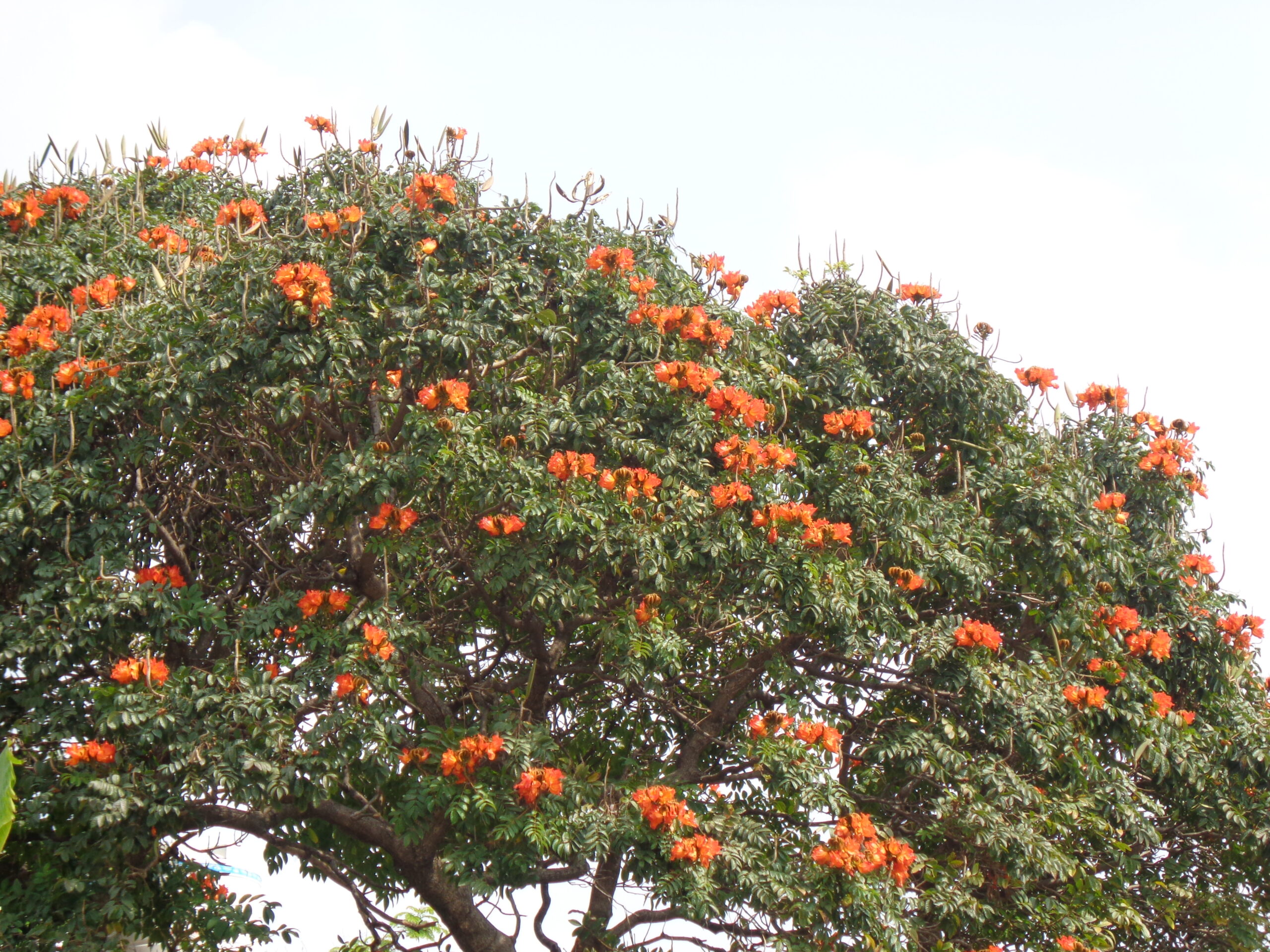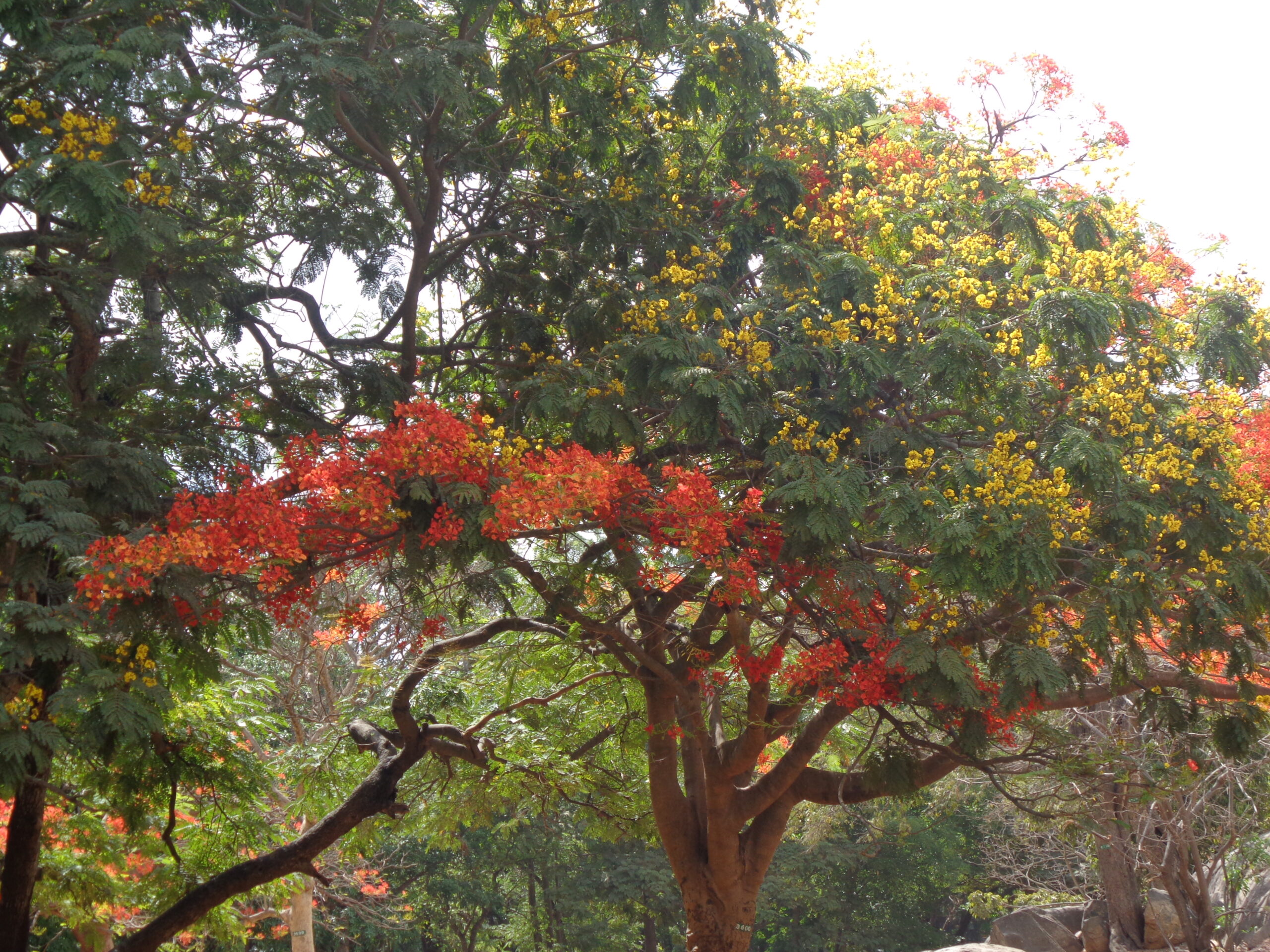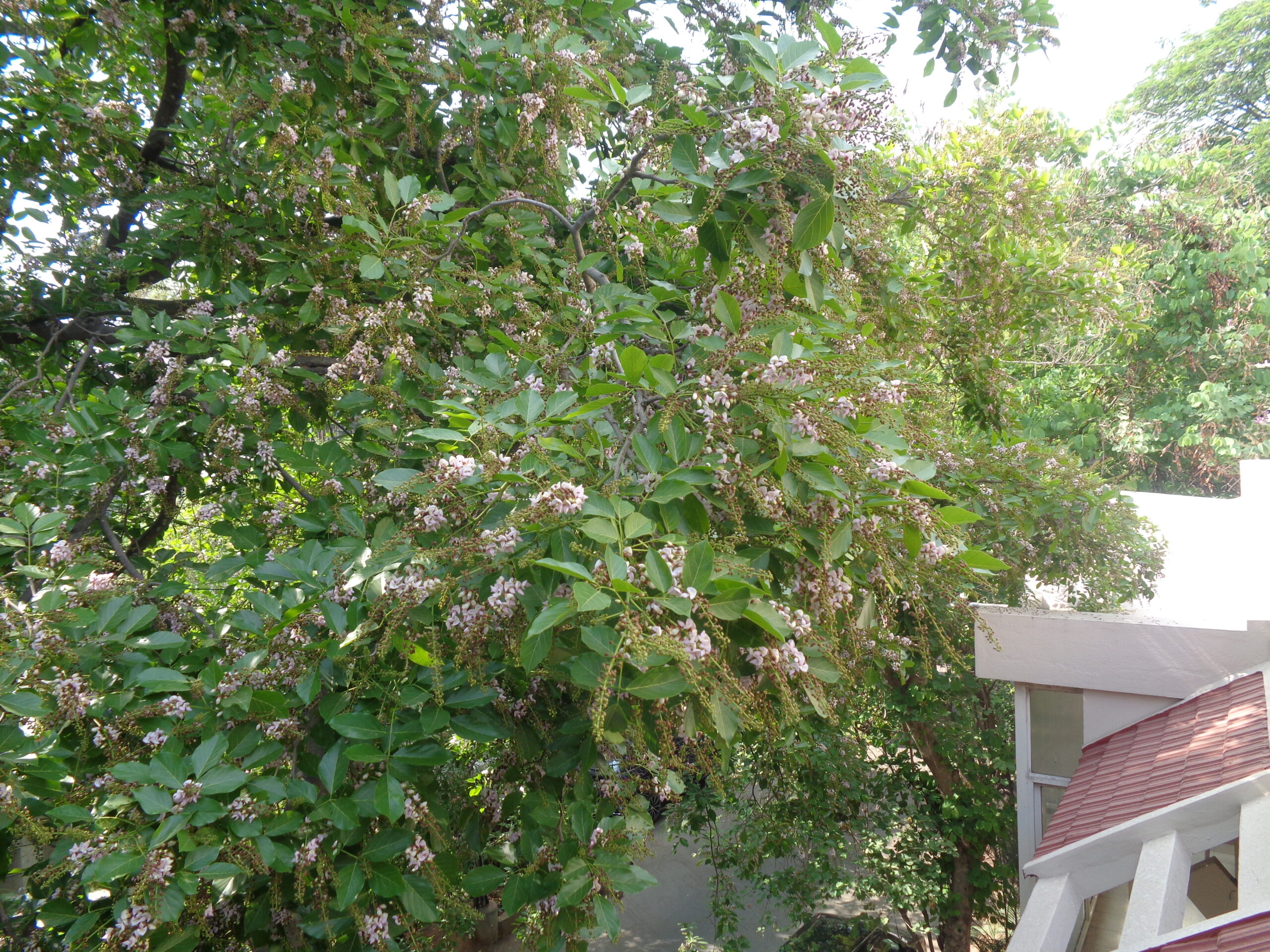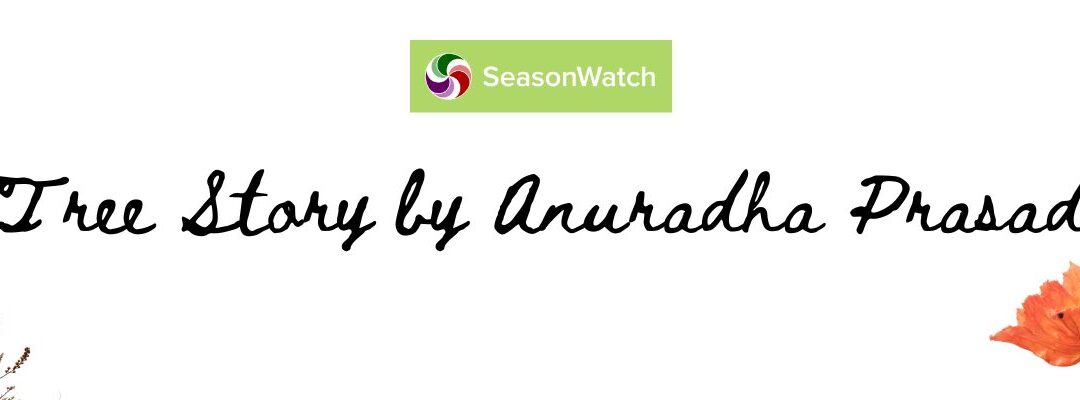My childhood was seasonless and the trees were nameless. I grew up in a house in front of which grew a tree whose branches reached our balcony.
A fleet of parakeets would dive into it and peck at its seeds sending the little winged seed, oatmeal-like, scattering. I sent the fallen and split shells of seedpods on canoe adventures along the small streams made by rain. The fully blossomed flowers, bright orange with flame-shaped tips, were not as interesting as the plump water-filled buds that would fall to the ground in clusters and whose tips could be cut off to squirt water on unsuspecting strangers. They left my fingers blackened and smelly.
The trees with their flowers, leaves, and fruits were props, playthings, and fantasy terrains for imaginary adventures. The leaflets of coconut fronds were ripped and rolled into finger rings or folded to make whistles. The gulmohar’s sepals became demon nails. The weeds too were not spared. The king’s heads were knocked off and the touch-me-nots touched. The Chikoo tree with its milky sap and haunted look we left to the school of monkeys that marauded it every Sunday.
Living in Bangalore, the Garden City, there have been plenty of trees around my various homes and in parks that were always a stone’s throw away from wherever I lived. Even as the pavements were concretized doing away with the wonderland of weeds, the trees have lived on. For many of the trees, this city’s been home for longer than it has been mine. 
African Tulip Tree
It would be years before I learned that the tree by my childhood home was an African Tulip and many more years before I learned that it came from the tropical forests of Africa. In fact, many of the avenue trees of Bangalore are not indigenous and have been brought in from various parts of the world since the time of Haider Ali and Tipu Sultan who brought to life Lalbagh, a botanical garden. This legacy was carried on by notable European and Indian horticulturists during the colonial rule and in the years after.
 Gulmohur and Copperpod
Gulmohur and Copperpod
Gustave Krumbiegel who came to the then-Mysore state on the behest of the Wodeyar king implemented serial blossoming that ensured Bangalore was always in bloom, each flowering species making way to another marking the seasons as they go on: the Indian cork tree (Akasha Mallige) making way to the Pink Poui (an Instagram hit) to the Yellow Tabebuia to the Gulmohar, Jacaranda, and the Copperpod.
 Pongam/Indian Beech Tree
Pongam/Indian Beech Tree
My relationship with trees and how I see and approach them has changed as I have grown older. I am more conscious of the seasons: the weather and the trees are its most visible guides. For the last decade I have lived by a pongam tree (Indian beech tree), my unwitting muse. This one’s indigenous.
The pongam tree drops most of its leaves come spring. Then come the fresh green leaves, a tender and sharp shade of chartreuse. Before long summer sees the trees full of flowers, white and violet. After a short spell, the flowers drop to the ground and make thick carpets, soft at first and, later, crunchy. The heaps of fallen flowers are often used as compost for plants because they are nutrient-rich. The fruits, flat and bean-shaped, are overshadowed by the profusion of flowers. Following these short weeks of intense activity and transformation, the Pongam tree settles down for the rest of the year. The leaves mature to a darker green, quiet but for the many birds and insects that come into its dark shade.
Tree walks, guided and on my own, have helped me learn more about the trees in the city, those from afar and those that are native. Knowing their names and stories has brought them into sharper focus. They no longer loom shapeless and merely pretty in the background but their presence ground me in my environment. The awareness of their presence also highlights the threat of their absence and the necessity to hold close the green cover that is inherent and personal to the city’s identity and history as the clamour for urban growth gets louder.
All photos by Anuradha Prasad
About the author: Anuradha Prasad is a writer and editor living in Bangalore, India. She is currently exploring her interest in place, wildlife, and nature. She reviews books for an ecoliterary journal and writes short fiction, essays, and poetry. Her work has been published in Indian and international publications including Split Rock Review, Current Conservation Kids, Usawa Literary Review’s Ecology and Environment Issue, and Khôra.





